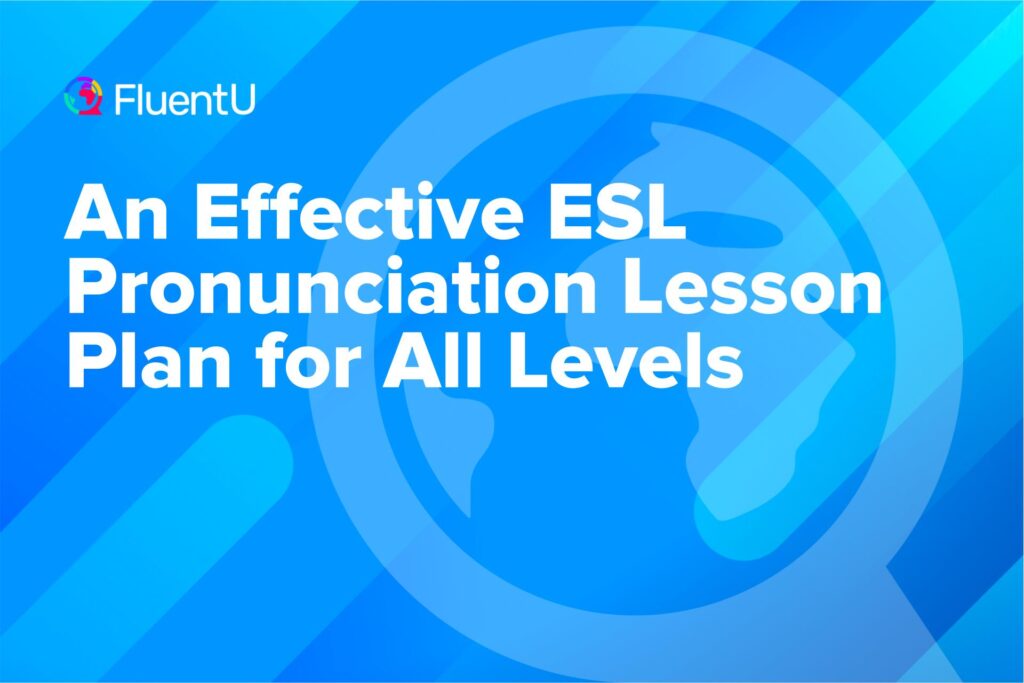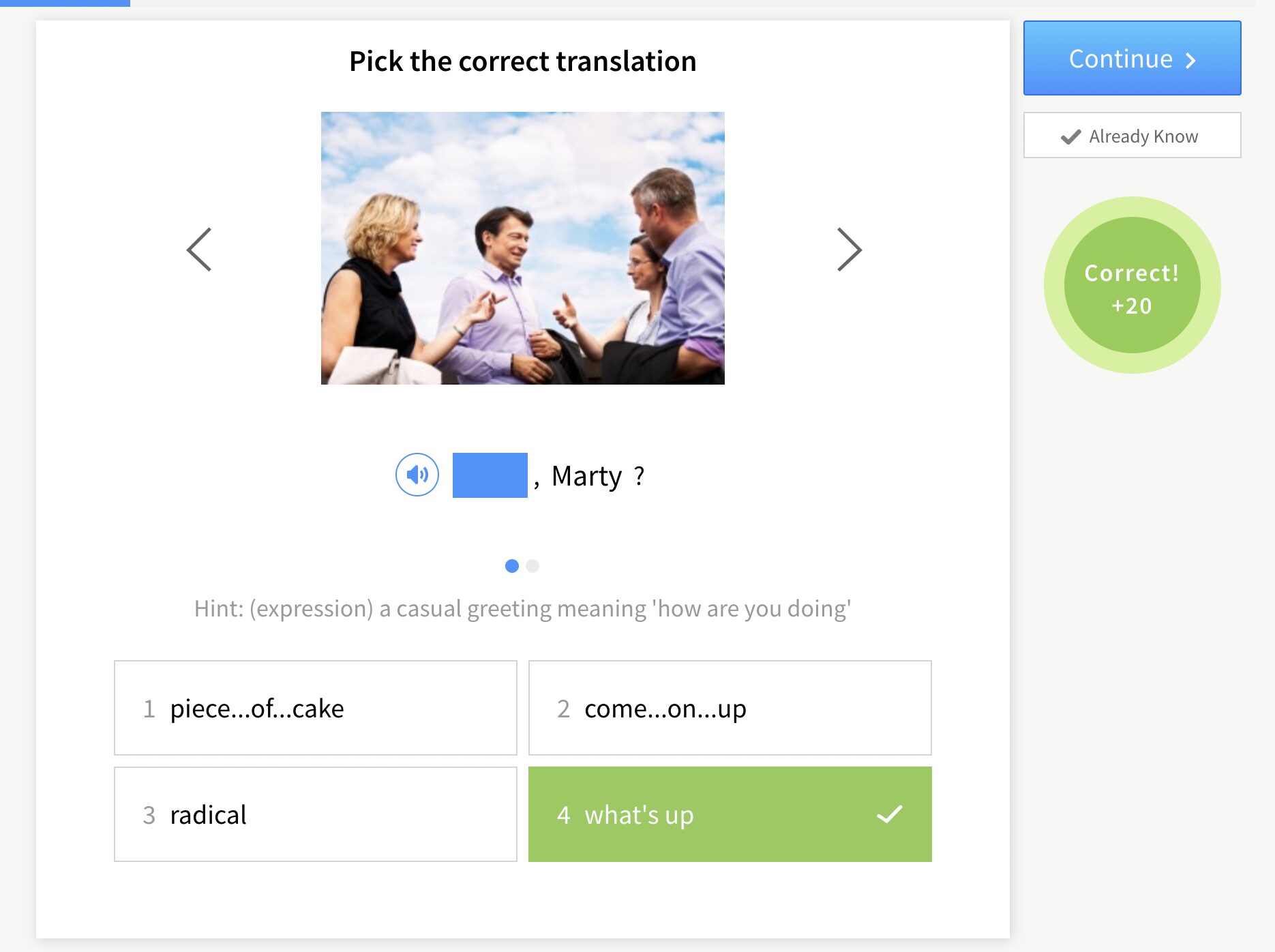An Effective ESL Pronunciation Lesson Plan for All Levels

While ESL students don’t need to acquire a neutral American or British accent, it is necessary for them to speak clearly in order to be understood.
Most ESL teachers will focus on pronunciation with lower-level students. And while it is more important to reinforce pronunciation with such students, even higher-level ESL students require a reminder every now and again.
Fortunately, there’s a technique that can be used for all levels of ESL. Take a look at my pronunciation lesson plan using below so you can fine-tune their skills.
Download: This blog post is available as a convenient and portable PDF that you can take anywhere. Click here to get a copy. (Download)
1. Present the text to the students
Whether you’re using the course textbook or your own text, ensure that every student has a copy to read. You may need to check that all the students are on the same page and at the same place in the text before beginning the lesson.
2. Focus on a specific point of ESL pronunciation
The key to a pronunciation lesson being effective at all levels is to have a focus on a specific point of pronunciation.
For some levels, you could focus on “-ed” for words in the past tense and words with “-s” or “-es” endings. For lower levels, you may choose to focus on soft and hard “g” sounds, or other commonly confused sounds.
Highlight whichever aspect of pronunciation you are choosing to focus on to your students before reading the text, so they know what to look out for.
3. Read to the students
Tell the students to follow along as you read the selected sentence or paragraph to them. Read the text slowly and clearly so the students can hear each syllable. Emphasize the sounds you want to focus on for the lesson.
4. Read the text again
It sounds redundant, but it helps. Read the text a second time, but this time read it a little faster with a more natural tone. The speed with which you read to the class is determined by the level; advanced ESL students should hear it the way a native speaker would typically speak, while beginners should still hear it read slowly.
5. Review difficult words
Ask the students if they believe they can pronounce every word in the text. If they have a difficult time with any words, they should ask you to repeat specific words. If you already know that some words will cause problems, repeat them individually and have the class repeat the words in unison.
6. Give every student a chance to read
This is the most time-consuming part of the lesson. Go around the class and have each student read the text. Sometimes it’s best to choose a volunteer to begin this exercise and move about the room at random. If you choose to have students read in order, there is a greater chance that students at the end of the line will doze off rather than pay attention and review the text as their classmates read aloud.
7. Correct the reading
Stop the students as they read. If a student mispronounces a word, have the student stop and try again. Do not move on until the student has read the text clearly. Some students may get upset or frustrated, but the attempts at perfecting the reading will reinforce the correct pronunciation.
With younger ESL students, you may want to move on to another student rather than have a single student repeat the text until he or she gets it right. Don’t ignore those students who aren’t quite getting it; go back to them after you’ve given the rest of the class a try.
If a lot of students are struggling with the pronunciation, begin the process again. Give the students a break and have them listen and read along to reinforce the pronunciation that they should learn.
8. Finish the reading
After all the students have read the short selected text, finish reading the full story you selected for class. Go around the room and have students each read a portion until it’s finished. Be sure to correct the target pronunciation as the students read the rest of the story. As with all reading exercises, it should be combined with vocabulary lessons and questions for discussion to ensure students understand the text.
A variation of this can be used either in class or as a homework assignment. There are many online resources for stories with audio; you must be careful, however, as just as many aren’t useful for learning English.
ESL Pronunciation Resources
Voice of America (VOA)
The best 100% free resource to give students to practice on their own is, unfortunately, intended for students at the intermediate level or higher. The Voice of America (VOA) has a website full of news with audio intended for ESL students using what the organization calls “special English.”
The special English on the VOA is spoken clearly and slowly; the speech is metered so students can understand it better. It also uses vocabulary that isn’t too advanced for most intermediate ESL students, making it a useful resource.
FluentU
Another great resource with many videos is FluentU.
FluentU has authentic videos (TV shows, music videos, news, speeches, etc.) leveled across six levels, and every word is carefully annotated so that learners have plenty of support. Every word comes with an in-context definition, image and multiple example sentences.
You can even click on a word to see how it’s used in other videos across the site. Say goodbye to spending hours searching for good videos on YouTube and hello to focusing on actually teaching your students.
Merriam-Webster Learner’s Dictionary
Another online resource for ESL students to practice pronunciation is the Merriam-Webster Learner’s Dictionary. While this is mainly intended to be used for simplified definitions to aid ESL students, the website also provides an audio link for each word. It doesn’t provide as much pronunciation practice as the VOA website or the in-class exercise, but it is useful for students of all levels.
When used at appropriate times during an ESL course, this lesson will improve students’ pronunciation, which will also increase their confidence when speaking.
With tons of pronunciation practice and immersion, your students could even be able to recite bits of “The Chaos,” but it’s only fair that you master that beast of a poem first!
Download: This blog post is available as a convenient and portable PDF that you can take anywhere. Click here to get a copy. (Download)
And One More Thing…
If you’re like me and prefer learning English on your own time, from the comfort of your smart device, I’ve got something you’ll love.
With FluentU’s Chrome Extension, you can turn any YouTube or Netflix video with subtitles into an interactive language lesson. That means you can learn from real-world content, just as native English speakers actually speak.
You can even import your favorite YouTube videos into your FluentU account. If you’re not sure where to start, check out our curated library of videos that are handpicked for beginners and intermediate learners, as you can see here:
FluentU brings native English videos within reach. With interactive captions, you can hover over any word to see an image, definition, and pronunciation.
Just click on the word to see other example sentences and videos where the word is used in different contexts. Plus, you can add it to your flashcards! For example, if I tap on the word "viral," this is what pops up:
Want to make sure you really remember what you've learned? We’ve got you covered. Practice and reinforce the vocab from each video with learn mode. Swipe to see more examples of the word you’re learning, and play mini-games with our dynamic flashcards.
The best part? FluentU tracks everything you’re learning and uses that to create a personalized experience just for you. You’ll get extra practice with tricky words and even be reminded when it’s time to review—so nothing slips through the cracks.
Start using the FluentU website on your computer or tablet or, better yet, download our from the App Store or Google Play.
Click here to take advantage of our current sale! (Expires at the end of this month.)













